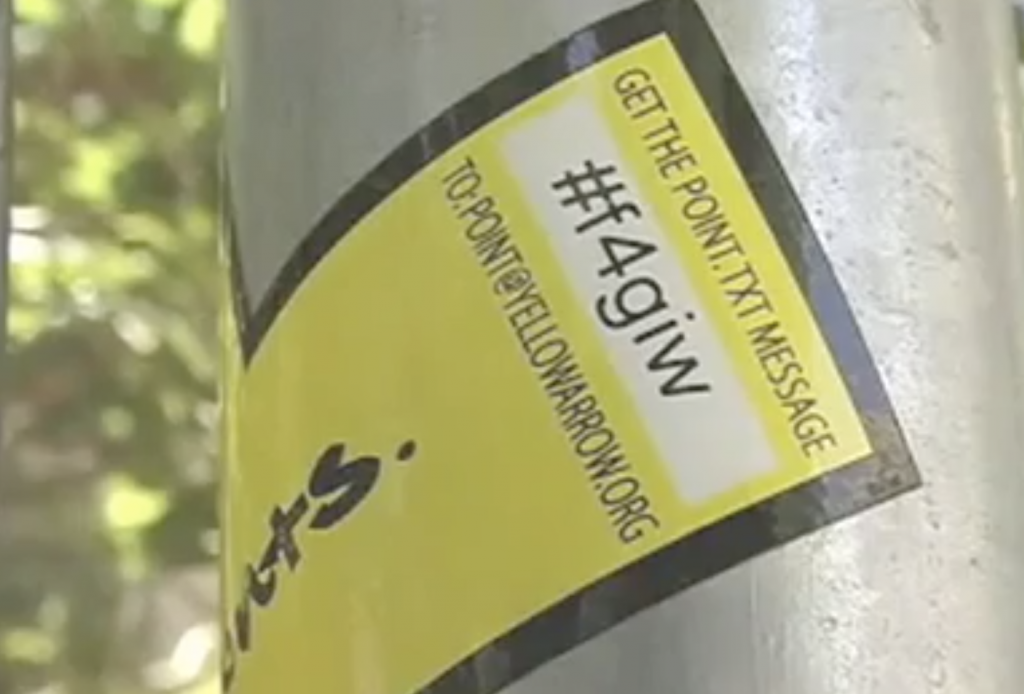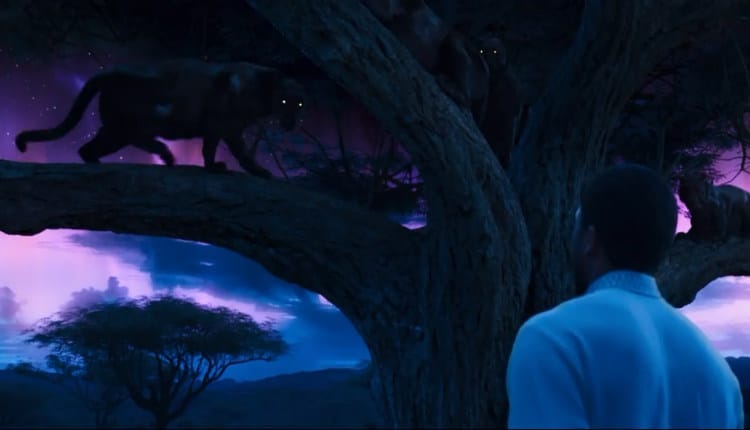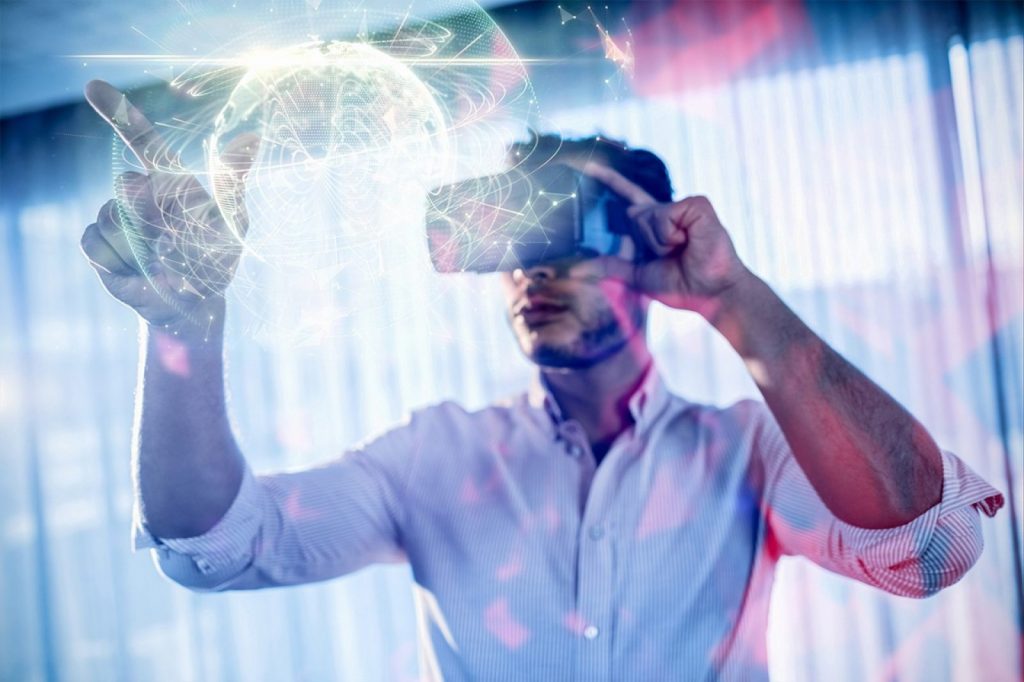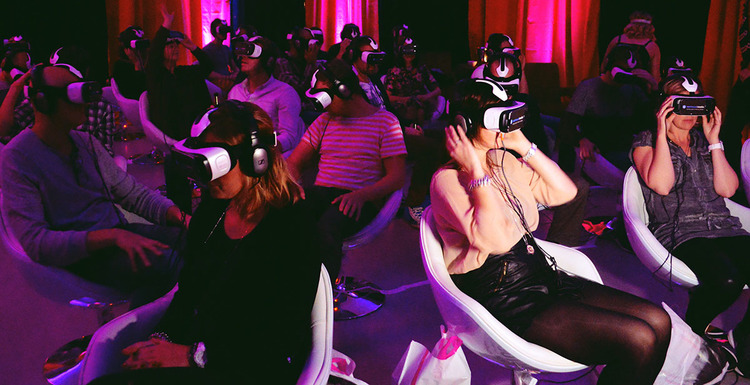For our final project, Jake and I are creating a cavern exploration adventure game in the style of ZORK or Colossal cave adventure. We will make references to the other two games throughout, but the game will be playable without the context of the other two games. The game will be created in twine and will not be navigated like ZORK and Adventure in a text parser style, and instead will be a hyperlinked, choose your own adventure-esque game. This project will be investigating hypertext using twine, interactive fiction through the structure of the story and the references to other games, and collaborative fiction, as Jake and I will trade the twine file back and forth to create the game. Due to the explorative and collaborative nature of how we will be writing the piece, the plot is tentative and may go in a different direction.
The traverser plays as little red riding hood and begins the game by being told to deliver a basket to grandma’s house, in the forest. Before going in to the forest, the traverser may look around for tools that may help them throughout the game. For example, the traverser may remain in the house and look around, finding their red riding hood, which will keep the warm later in the game. While investigating the garden outside their home, they may take a vegetable and a gardening tool, which may help or hinder them during their quest. Upon reaching the forest, the traverser will fall down a hole and must navigate a series of caves to escape.
Aspects of ZORK and Adventure we plan on emulating in our game include an inventory with a set limit, navigating using the cardinal directions while in the cave system, and actions available to the traverser that leave the game unwinnable. The inventory system in ZORK adds an element of difficulty and strategy to what items a traverser needs to prioritize during the game. Little red riding hood carries a basket of food for her grandmother and will carry her inventory in the basket as well, giving us a narrative reason for her limited inventory. As the game is navigated through hyperlinks rather than a text parser, while in the cavern system there will be a hyperlink for each direction, as well as a hyperlink to the basket inventory.
Category: Student Blogs
Thoughts on Divergent Streams

Of the different types of divergent streams the one, I found the most interesting was The Yellow Arrow Project. I went and watched the video of the project and have to admit I chuckled as I saw the brick phones that were used. The users would discover arrows and then text their part of the story. It takes the user on a unique experience in everyday life. I do think that it is a cool concept and something that could be updated to something more current.
It also made me think back to the days when I didn’t have internet on my phone. Through the use of a service called ChaCha, one could text a random question and get an answer. I think it would be interesting to take some of these conversations and make them into a digital literature piece.
In regards to literary possibilities for AR and VR. I think just through the current apps and games on the market one can see that this a very viable option with a plethora of opportunities. Having the user become part of the story and with the use of VR close off the outside world, an interactive story makes the user more engaged. With AR I could see something similar to a Pokemon Go experience where the user goes to specific locations to gain the next part of the story.
I found this chapter interesting and I think it would be cool to create a work similar to the ones talked about by Rettberg.
You Could Be “Player One”, Are You Ready?

Farinsky Blog 9: 3D Literature
Blog: Which of the new forms from “divergent streams” discussed by Rettberg interest you most? Why? What literary possibilities are there in virtual and augmented worlds?
People often choose to view the future of technology with optimism. I am one of those people when thinking about the “divergent stream” of Virtual Reality (VR) or Augmented Reality (AR) platforms. We may never have a program as imaginative, or as complex and widespread as the OASIS program from Ready Player One, a book written by Ernest Cline, but that doesn’t mean we do not have the potential to create something incredibly similar.
There are infinite learning possibilities that can come from VR technology. Imagine a “game” or a “collaborative digital virtual experience” where a warehouse or museum space is transformed through a VR headset which transports the user to the middle of a historical event.Students could put on headsets and “meet” recreations of historical characters, have an interview with authors they are reading in class, or view an important lecture by a prominent academic regardless separation by location or time. Think of how powerful experiencing education could become compared to passively reading textbooks or watching videos.
I am also excited by the possibilities VR bring because a VR headset and experience can add accessibility. In hospitals like UCSF Benioff Childrens Hospital:
Or this video by Mashable:
Think about an individual who could “leave” their hospital bed or “attend” classes because the immersive nature of VR makes travel possible. Pain patients participating in studies with VR report decreases in the amount of pain they experience, people could learn to walk based on moving a character’s leg instead of being limited by mental blocks about using prosthetics, and these ideas are just the surface:
What if home-bound individuals could put on VR goggles or use an AR camera to initiate a program where the author of a book (or another individual) reads the book to this person so they are stimulated and potentially feel less lonely?
Do you think learning about Martin Luther King Jr’s incredible rhetoric would be more powerful if we created an experience where you were listening to his speech at the Washington Monument as a member of the crowd?
The future of this technology is powerful if we can harness the ability of VR and AR to provide meaningful experiences that challenge our understanding, and empathy, as individuals.
Final Essay Description
My final essay is going to be a Twine piece that takes heavy influence from Robert Coover’s “The Babysitter”. Coover’s piece has been the most fascinating work we have explored in class, and I want to use electronic literature to expand what he sought to achieve with “The Babysitter”. In order to do so, my piece is going to follow an average day for someone suffering from intrusive thoughts and maladaptive daydreaming.
Intrusive thoughts are common within people suffering from common mental illnesses like depression and anxiety, giving them involuntary thoughts that can become distressing, obsessive, upsetting, and more. Combined with maladaptive daydreaming, a much more intense form of daydreaming that often disrupts human interaction and connection with the real world, these thoughts can feel so real that the sufferer may have a hard time remembering what events actually happened and what was simply in their head.
I think this is a really fascinating topic to explore in this medium to both attempt to combat the stigmatization of mental illness and create a nonlinear storyline. Like many modern hypertext fiction writers, I am choosing to use Twine to produce my piece. Doing so will give me the visual advantages of the software to lay out my story as well as give the readers a simple platform to traverse the story. With little explanation of what the piece is about, I hope to confuse the readers much like “The Babysitter” does, but do so in a way that catches their attention and encourages them to look through the piece multiple times to understand its meaning.
Virtual and Augmented Reality

I first began hearing about virtual reality around 2014. The Oculus Rift had just been funded and was then purchased by Mark Zuckerberg and Facebook. Hearing about it for the first time and watching multiple youtube videos I became especially excited for the potential to play large open world games like Skyrim or Fallout within VR. I hadn’t considered the use of VR for story telling alone outside of the realm of games. The user doesn’t necessarily need to interact with a piece to become immersed within it. It would not surprise me if very soon films began being made specifically for VR. One indication that cinema is headed this direction is the new screen x movie screenings. Screen X is essentially three movie screens being used to expand the view of a film. There is the usual front facing screen and then two screens on either side of the viewer that continue the scenery of the middle screen expanding and building the setting around the viewer. The most Prominent film that has been play this way is Marvel Studios Black Panther. The extra screens are turned on when the characters arrive back in Wakanda and when the main character T’challa is in another world that allows him to talk to his ancestors. This three screen approach could almost be considered virtual reality for multiple viewers.
AR is something that has become very popular in app development in recent years. I most cases AR is being used for games such as Pokemon GO or the new Harry Potter game that has just been announced. AR also has great potential for storytelling especially in the case of informative walking tours. Currently in the Senior Seminar we are developing a couple different AR experiences to tell historic stories of Downtown Vancouver. AR allows a user to see a simulation of how something would look in the real world, like the face of an old building directly next to a current city skyline.
Divergent Streams

Technology allows creators to tell stories in just about anyway they can imagine. They are no longer limited by print and have the opportunity to come up with unique methods that help convey their story the best way possible. These sorts of modern stories oftentimes revolve around various types of hardware and screens. Some stories like Text Rain take the elements our languages have been using for centuries and find unique uses for them. It could even be called a new form of reading, not just playing. The rise of virtual reality has been a slow one. Ever heard of the Virtual Boy Nintendo made in the 90’s? It only had the colors red and black. It was a massive flop and they’re just now getting back into trying out virtual reality. Obviously since the virtual boy, technology has gotten much better. I think there is much potential with placing yourself in a space where you are completely surrounded by the world the story is being told in. I’m looking forward to when VR becomes cheaper and wireless. The less boundaries there are the better. I have seen a bit of worrying going on that concerns people being too intimate with the VR experience. Wearing a VR headset with headphones is a convincing way to remove you from reality. I think if it is done in moderation and users take the headset off every hour or so to check what is going on, things will be fine. AR is something I have had more experience with. I have seen it used in museums to give more info on exhibits. Some even include animations. Pokémon GO introduced many to AR too.
“Virtual and augmented reality have also provided new tools and approaches for the presentation of narrative and poetic works of electronic literature in immersive environments.”
Expanded Cinema, Virtual Reality and Augmented Reality

I’ve read through Scott Rettburgs chapter on Divergent Streams and, I have got to say, that the from that really sticks out to me would have to be “Expanded Cinema, Virtual Reality, and Augmented Reality.” The reason why I felt like that one seemed the most interesting to me is because I have always been the guy that’s fascinated buy tech that can put us into another place without even having to leave your own home. I never thought that we could live in an era that Virtual Reality would be a possibility, you would be able to truly experience the fictional world for yourself by truly being the main protagonist and going onto an adventure that you’ve always wanted to go on when you where just a kid.
“3D or even “4D” cinema experiences are now commonplace. In a somewhat humbler way, expanded cinema has also crossed over into electronic literature, as a number of writers and artists have produced works that apply techniques and approaches common in electronic literature in the construction of cinematic experiences.”
This explains that even things like Virtual Reality and Augmented Reality as well as Expanded Cinema can work, fantastically, in electronic literature by telling us a story and having to choose your own path or, in Augmented Reality case, play Pokémon Go because It is a great example of Augmented reality which is adding a virtual feature inside of the real world and you progress by catching Pokémon and leveling them up but in order to achieve said goal, you are going to have to actually walk around town which, I think, is an amazing mechanic.
Divergent Streams – March 22, 2019

By far the most fascinating form of electronic literature discussed by Rettberg in “Divergent Streams” is virtual and augmented reality. VR is a concept I have discussed in previous DTC courses, because of my simultaneous fascination and fear of it. However, I have never looked at it critically as a vessel for writing, which I think is a potentially powerful tool for literature.
VR and AR are possibly the best tools for turning writing into a piece of technology by either creating a world for the text to live or giving the text the ability to live in our world. Rather than using the confines of available software and platforms, VR and AR allow the reader to interact in the most personal way possible by making the text a living entity that stands beside us. Rettberg’s provided examples of writing in augmented worlds, like Pry, showcase the powerful emotional connection that can be achieved via VR and AR.
Augmented worlds have proved to be scary yet exciting training grounds for the future of technological immersion. As Rettberg discusses, electronic literature is no exception. Augmented worlds hold a lot of potential for bringing pieces of poetry and writing to life to further encapsulate their meanings. Using the reader’s interaction to progress a story is a powerful tool for emotional connection, and VR and AR are easily able to do this. What is perhaps most exciting about the use of augmented worlds for electronic literature is the range of the works’ scales. A piece of writing in VR or AR can be short and simple, or it could be an entire world for a reader to explore that takes them out of body and puts them into a sea of text.
3D Literature

Based on the several divergent streams that Rettberg discussed, I personally found expanded cinema the most interesting. This is because I personally have a deep interest in cinema, and the idea of altering cinema to become more and more interactive is very appealing. I also believe that cinema is ever-changing and likely will never die out. A big part of this is because the genre is ever evolving, and the forms of expanded cinema that Rettberg discusses only provides more examples of how the genre might evolve over time. I find it likely that cinema will become more interactive as the years progress, but honestly I doubt mainstream cinema will ever get to the extent that Rettberg discusses. For example, Rettberg talks about interactive films where the viewer ultimately decides which events unfold. This has already happened with Black Mirror: Bandersnatch on Netflix, and although I can absolutely see a special event showing of a film in theaters where viewers vote on the decisions of the characters, I highly doubt something that niche would ever become a mainstream viewing experience. Some literary possibilities within virtual and augmented worlds could include the viewing of films in virtual and/or augmented reality, which is already becoming somewhat popular, or even a truly interactive story written with the users decisions in mind. An example of this might be like a virtual reality version of those old choose-your-own-adventure text-based games, only hyper realistic. Since text-based games already were extremely popular, I could absolutely see virtual reality version becoming somewhat mainstream as well.
Dylan Niehaus – 3D Literature

The “divergent stream” brought up by Rettberg that interests me most is the use of locative technology in a narrative way. I have always found locative technology to be incredibly fascinating. If I am bored and have nothing to do, one thing I do to pass the time on occasion is just look around and explore the world on google earth, just to see what different locations in the world truly look like from up above. Locative technology has already been gamified in an incredibly successful manner with the mobile game Pokemon Go. But, while pokemon go is a successful venture into the locative technology game market, it is completely lacking in narrative. I have yet to see or hear of any successful mobile game that tells a story by directing users to real-world locations. As Rettberg brought up, locative technology can hold many possibilities in this regard, one of them being the idea of guiding the user along the tracks of a criminal in the real world.
Rettberg also brings up the fact that locative storytelling has been used in a purely audio sense, such as guided tours of a specific location. I myself have experienced this form of locative storytelling when I visited Alcatraz island in 2004. I remember being handed a cassette tape or audio player of some sort and a pair of headphones and being guided through the prison as different stories, facts, and details of Alcatraz were told to me through the audio device. Unfortunately, I was too young to be truly interested in or appreciate the stories being told, but I do definitely somewhat remember the experience. With things such as virtual and augmented reality on the rise, I think it would be amazing to see the “audio museum tour” be taken to a new level. Once augmented reality becomes more commonplace, it would be possible to add amazing visual elements to these audio tours by showing the events themselves unfold right before the user’s eyes. One story I do vaguely remember in the audio tour of the Alcatraz prison is the story of inmates that managed to escape or almost escape. Maybe with the addition of augmented reality, being able to not only hear the story but also see it unfold as it did in the very same location that it originally took place, I would be able to remember it more vividly.
Augmented Reality
Augmented reality electronic literature is a very exciting divergent stream of electronic literature because it may be the easiest genre electronic literature to immediately see real world applications for, by benefit of what it is. Enhancing reality by making more information available about an individual’s surroundings is one of the most exciting fronts of digital technology as many existing experiences and events can be vastly improved in constantly growing ways by digital technology.

The Oregon Zoo installed their first zoo key system in 1970 and still uses a system installed in 1984 today (I had a lot of trouble finding a reliable source on this, they may have updated their system since). The zoo key program is a collection of audio boxes paired with animal enclosures and exhibits that will play a message containing information about the animal or exhibit upon insertion of the plastic zoo key. The current setup is nostalgic and the physical aspect of having a key and finding the audio boxes is great and shouldn’t be replaced, but the system could be improved and regularly updated by placing unique QR code stickers on each box and allowing visitors to receive much more information than audio on their phones, similar to the “Yellow Arrow Project”s unique numeric identifiers. GPS could be used in this system as well, making information available to users upon entering an exhibit or area of the zoo. The zoo key project is directed at young children, so incorporating children’s stories would be a natural addition to the current system.
Museums, galleries, zoos, and many other destinations have physical placards for information in addition to audio tour systems. Places whose goal is to inform must balance including as much information as they can and making placards easy and enjoyable to read for a wide audience. Many people will leave a placard wanting to know more about a topic or having skimmed the placard and retained nothing because it was too verbose. Making the information available on your phone allows organizations to include summaries, short, and long form pieces of information for each location, to allow the audience to choose the right amount of content for them, as well as being able to link out to outside sources. Audio systems are often expensive to rent or clunky to carry around, depending on how new the system is. Navigating audio tours can be frustrating depending on the system. In art galleries for example, an audio tour could be divided as broadly as 20 minute chunks of audio per exhibit, or two to ten minutes recordings per piece. No matter how minutely a physical audio device divides an exhibit, it still cannot tell you what will be contained in each individual recording and where the information will be in each recording. Parsing through audio recordings is always easier with time stamps and context which can be provided more easily on a phone than on a physical device.
In all the ways augmented reality can be used to increase the dispersal of factual information and nonfiction, it can be used for literature as well. Augmented reality makes room for literature in spaces where space for information is at a premium, physical space or audio wise. Incorporating narratives in spaces such as art galleries and museums allows these spaces to manipulate wayfinding and exploration of their spaces through apps they can update regularly.
Rettberg mentions “dérive, a practice of consciously breaking habits of movement and interaction with (a location)”
A place like the Oregon zoo or OMSI could publish a physical children’s book and/or app about their space that allows visitors to explore the place by following the locations in the narrative along with the location. The zoo could guide visitors through the park based on the level of activity in animals based on the season or time of day, releasing a new narrative every season to attract visitors year-round. Zoolights would be a great opportunity for this as well, a new holiday themed story could be paired with the lights every year. Augmented reality allows organizations to include literature in their spaces in ways they could not while having to prioritize space for information.
Angels and Network Writing
“Electronic Literature is most simply described as new forms and genres of writing that explore the specific capabilities of the computer and the network”
– Scott Rettberg
Most of the electronic literature we have discussed in this class has been focused on, or more apparently has to do with, the computers programming capabilities. Other than hypertext fiction, most of the works we have been traversing have been fueled or made interactable through their programmed elements. Network writing is focused on the network capabilities of the computer.
“Networks are both technological and social structures. For electronic literature, networks are both platform and material.”
– Scott Rettberg
Network writing is made up of collaborative works that use the capabilities of the network to build the piece, or the piece resides in a networked instance on the internet, such as social media posts, email, or websites. The piece “The Fall of the Site of Marsha” by Rob Wittig combines these two aspects of network writing. The work is hosted on three iterations of a nostalgic HTML site, created by Marsha with the help of her husband, Mike, dedicated to angels. The iterations of the site get subsequently darker as the angels take over, first adding text, that is struck through to represent Marsha and Mike’s attempts at stopping the angels, and eventually deteriorates to a disturbed and dark version of the website, where the angels have taken over. This work emulates collaborative network writing, with the angels editing and eventually taking over the content of the site. The work may be more palatable to traversers who are uncomfortable with the difficulty of traversing more programmed works, as it is presented in three static HTML sites. Traversers may become emotionally engaged in the work, as there are definite antagonists and protagonists, and the work presents itself in a linear fashion, if the traverser chooses to traverse the sites in order.